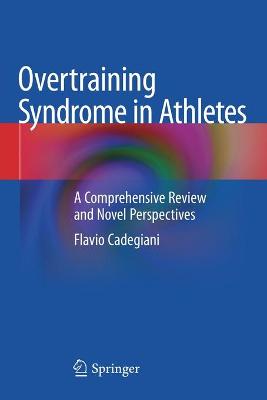(To see other currencies, click on price)
MORE ABOUT THIS BOOK
Main description:
This book discusses major changes in our understanding of the most prevalent non-orthopedic, sports-related condition - overtraining syndrome (OTS), arguing that it should be considered as the manifestation of burnout in athletes, rather than simply the result of excessive training.
While the chronic adaptations of the cardiovascular and musculoskeletal systems to exercise are well documented, those of the endocrine system are less well known, and adaptations of the hormonal ranges for athletes are yet to be determined. There is also a lack of standardized diagnostic criteria, consistent assessment methods and biomarkers.
This book offers a systematic review of the hormonal aspects of overtraining syndrome, and a comparison with sports-related syndromes triggered by chronic deprivation of different sorts, including the female athlete triad (and its derivative, RED-S) and burnout syndrome of the athlete (BSA). It demonstrates that these conditions, although studied separately from each other, may all be different manifestations of the same condition, leading to 'maladaptive' (dysfunctional forced adaptations to a hostile environment) changes in response to chronic depletion of energy and mechanisms of repair, causing multiple dysfunctions.
The author proposes that OTS/Paradoxical Deconditioning Syndrome (PDS), RED-S/TRIAD and BSA are parts of a same condition, or at least a group of similar conditions. Further, the book offers a chronological overview of OTS, based on preliminary research.
Given its broad scope, this concise reference book will appeal to a range of health professionals. It allows readers, including those without a strong academic background, to gain a systematic understanding of OTS.
Contents:
1. Introduction
2. Historical perspective
3. Basic concepts on overtraining syndrome
4. Classical understanding of overtraining syndrome
a. Initial theories
b. Preliminary biomarkers:
- Biochemical markers
- Clinical markers
c. Current diagnostic criteria
5. Methodological challenges and limitations of the research of overtraining syndrome
6. (New findings on overtraining syndrome)
a. Advances in the methodology
b. Lessons from the Endocrine and Metabolic Responses on Overtraining Syndrome (EROS) study
B1. Summary of the results
B2. Analysis of the results: the mechanisms and aspects unveiled by the EROS study
B3. Remarkable, unexpected, and novel findings
c. New markers of overtraining syndrome
d. Novel disruptors of OTS, predictors of clinical and biochemical behaviors, and correlations between clinical and metabolic parameters
e. Novel risk factors for OTS
f. Preliminary scales for prevention and identification of OTS
The EROS STUDY as a shift in the understanding of overtraining syndrome
7. New understanding on overtraining syndrome
a. From an overtraining-centered to a multi-factorial understanding of OTS
b. The pivotal sequence of dysfunctions that leads to OTS
c. Overtraining syndrome: an overt or a relative dysfunction?
d. Unexpected serendipitous findings of novel conditioning processes in healthy athletes
e. The novel key pathophysiological characteristic of overtraining syndrome
f. New concepts on overtraining syndrome
g. Particularities of the diagnosis of overtraining syndrome in female athletes
8. Similarities between Overtraining Syndrome (OTS), Female Athlete Triad (TRIAD), Relative Energy Deficiency of the Sport (RED-S), and Burnout syndrome of the athlete (BSA)
a. Female Athlete Triad (TRIAD)
b. Relative Energy Deficiency of the Sport (RED-S)
c. Burnout Syndrome of the Athlete (BSA)
d. Similarities between RED-S/TRIAD, BSA, and OTS/PDS
9. The high prevalence of "pseudo-OTS"
10. "Deconditioning" and "hypometabolism" as two neologisms that describe the novel processes identified in OTS
11. Practical approach to the athlete suspected or at high-risk for OTS
a. New diagnostic tools for OTS
b. Preliminary core for the diagnosis of OTS
c. Tools for the identification of athletes at high risk for OTS
d. Advances in the diagnosis of OTS
e. Effective prevention of overtraining syndrome
12. Limitations, challenges and directions for future studies on overtraining syndrome
13. Summary
14. Conclusions
PRODUCT DETAILS
Publisher: Springer (Springer Nature Switzerland AG)
Publication date: September, 2021
Pages: 333
Weight: 551g
Availability: Available
Subcategories: Anatomy, Biochemistry, Sports Medicine

